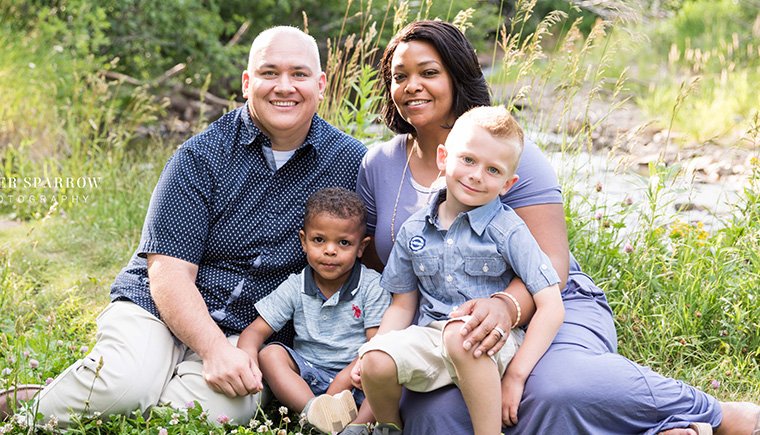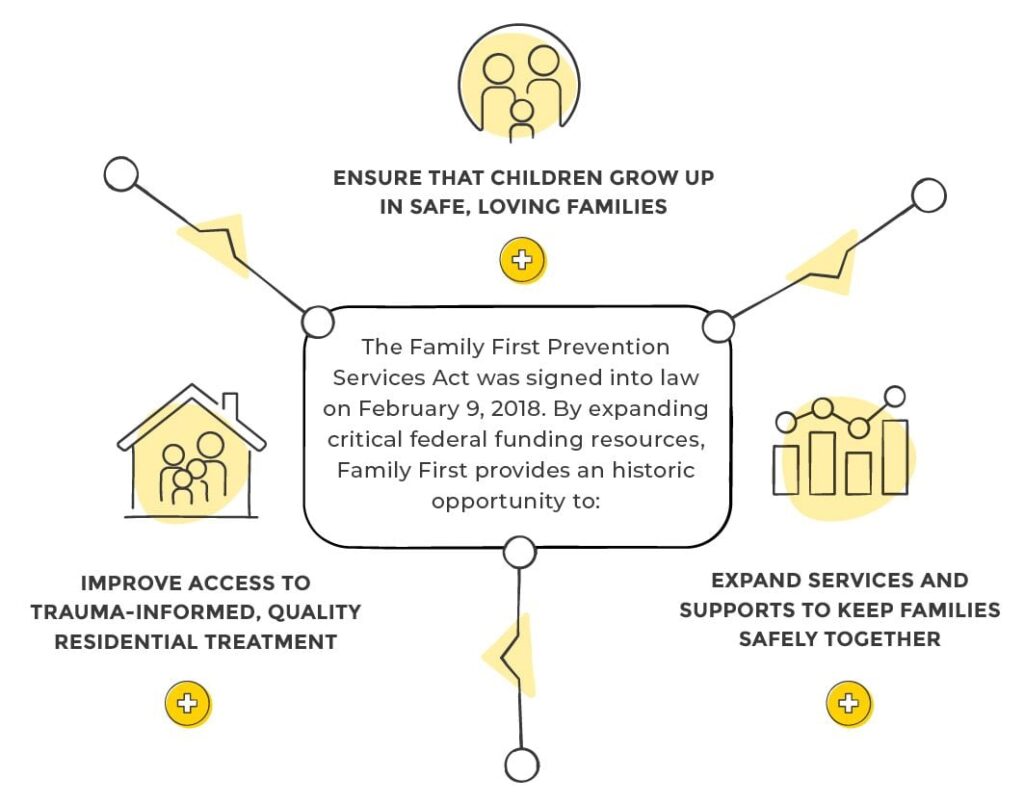Family First Dashboard
The Family First Prevention Services Act (Family First) is the most significant change to child welfare in decades. For the first time, federal funding can be accessed for prevention services that keep kids safe, growing up with their families. If staying home safely is not possible, Family First encourages care in a family-like setting or, if necessary for a short time period, care in a congregate setting designed to meet specialized treatment needs.


Colorado must comply with specific federal Family First requirements by October 2021. Additionally, Family First is one piece of a broader Colorado vision to evolve the child welfare system to serve children, youth and families together.
Implementation Principles

Implementation will occur alongside other system reforms and our ongoing work with children, youth and families.

Successful implementation will require strong and sustained partnerships among multiple stakeholders.

Implementation is a long-term, iterative process. There is no flip-the-switch moment when implementation is complete.

Through implementation of Family First, Colorado strives to improve policy, practice and quality of services in order to support community, culture, diversity, equity and access for all Coloradans across the state.
Family First Implementation Dashboard
The Family First Implementation Dashboard reflects the state’s priorities related to Family First and creates transparency with external stakeholders. The Dashboard is dynamic and will be updated regularly to reflect our progress toward short, medium and long-term goals.
To comply with Federal Law, the State of Colorado must have the following in place:
Short Term: Federal Compliance
To comply with Federal Law, the State of Colorado must have the following in place:
An approved plan will allow Colorado to begin drawing down federal reimbursement for eligible services. Federal feedback was received on Colorado’s first draft plan, and the next version is in development.
Status: Final plan, submitted on September 30, 2021, is awaiting final approval from the federal government.
CDHS-Office of Behavioral Health developed Colorado’s trauma-informed care model for QRTPs and will approve each facility’s plan as part of the QRTP application process.
Colorado has designed an independent assessor process to determine whether QRTP-level care is appropriate for individual children and youth.
Rules have gone into effect as of June 1, 2021. Confirming guidance from the federal government regarding immunization and any needed changes to Colorado rule.
Colorado has added extended foster care up to age 21 in its Title IV-E plan since early 2018. This change allows Colorado to access Chafee expansion up to age 23. Colorado is now in the process of ensuring implementation is consistent and supported throughout the state.
Medium Term: State-Level Goals
Colorado’s vision is to leverage Family First for sustainable system reform, not just compliance:
Opt-In to Prevention Services:
Colorado’s vision is to leverage Family First for sustainable system reform, not just compliance
Opt-In to Prevention Services:
An approved plan will allow Colorado to begin drawing down federal reimbursement for eligible services. Federal feedback was received on Colorado’s first draft plan, and the next version is in development.
Status: Final plan, submitted on September 30, 2021, isawaiting final approval from the federal government.
Fiscal and data systems are in place to track and claim federal reimbursement. Family First fiscal claiming group has completed its work.
Update: Colorado is in the process of designing and developing a statewide CQI Platform.
Colorado is in the process of using a data-informed process to develop a short, medium and long-term strategy for prevention services expansion statewide.
The federal law governing Institutions for Mental Diseases (IMD) was considered a major barrier to implementation. The Colorado Department of Health Care Policy and Financing (HCPF) has developed additional clarification and draft policy to minimize impact to Colorado’s placement continuum. Rule changes and implementation infrastructure are in development
Update: Rule has passed Medical Services Board (MSB) and awaiting CMS approval.
CDHS has developed a set of key strategies, based on stakeholder input, for rightsizing and refining the placement continuum.
All counties have been prepared for independent assessment
171 QRTP beds available to date.
An estimated 240 estimated capacity when the transition is complete.
$2,279,803 awarded through competitive grants.
$1,590,705 in strategic investment to ensure statewide readiness.
Long Term: System Transformation
Implementation is a long-term, iterative process
Family First will be leveraged as one of many strategies to achieve the state’s long-term goals:

Moving from a reactive child protection system to a proactive child and family well-being system

Prioritizing and incentivizing expansion of community-based prevention-focused services and dramatically reducing the need for out of home care

Building a robust continuum of care that is responsive to the needs of children, youth and families